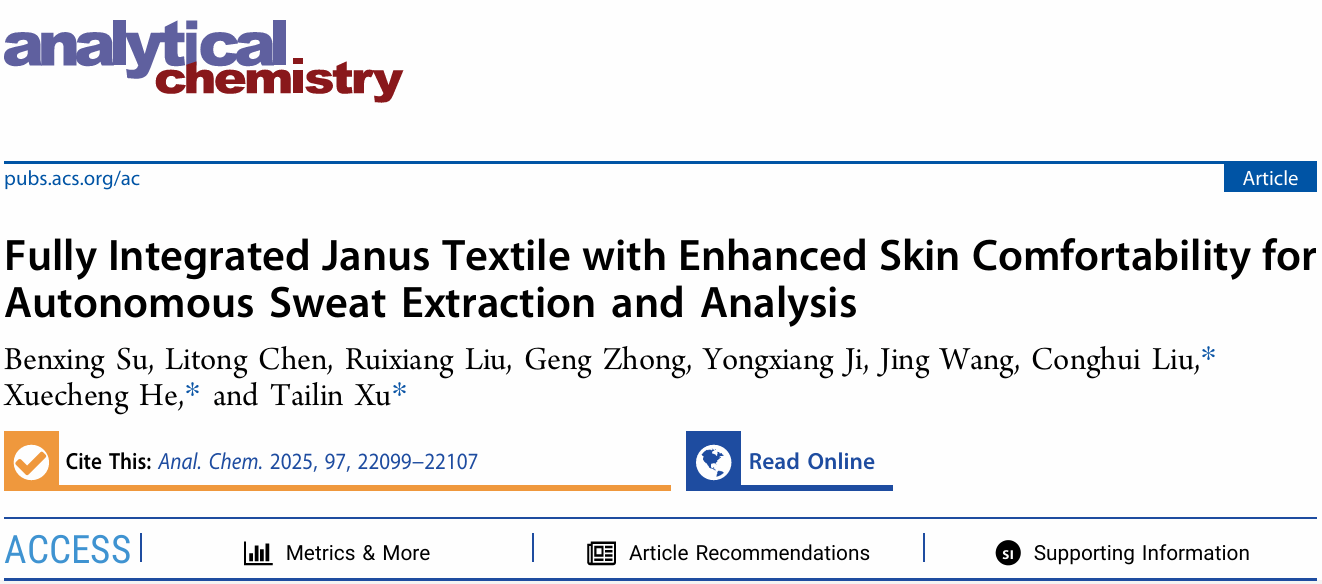Recently, Benxing Su, a master’s student of the Class of 2023 at the College of Chemistry and Environmental Engineering, Shenzhen University, published a research paper as the first author in the Nature Index journal Analytical Chemistry (Impact Factor: 6.7; CAS JCR Q1; TOP journal). The paper is entitled “Fully Integrated Janus Textile with Enhanced Skin Comfortability for Autonomous Sweat Extraction and Analysis.” The study was completed under the joint supervision of Associate Professor Tailin Xu, Assistant Professor Conghui Liu, and Dr. Xuecheng He from the University of California, San Diego, who served as co-corresponding authors. Shenzhen University is listed as the first corresponding institution.

Wearable sweat sensors have demonstrated tremendous potential in personalized health management and early disease diagnosis owing to their ability to noninvasively detect biomarkers. In this study, we present a fully integrated Janus-assisted sweat analysis platform consists of a Janus textile with asymmetric wettability, an iontophoresis module for sweat generation and multiplexed electrochemical sensors. The Janus silk with asymmetric wettability can directionally transport the sweat induced by iontophoresis, which enhances sweat collection and drainage efficiency (from 53 to 72 μL), preserves skin dryness. Compared with commercial iontophoresis sweat stimulation devices, this platform harnesses the active moisture‑wicking properties of Janus textiles to address epidermal overhydration and wet adhesion caused by iontophoretic sweating, thereby significantly enhancing wearing comfort (Visual analogue scale (VAS) score 3.6 vs. 7.7). Carbon nanotube fibers are integrated into Janus silk to achieve flexible and reliable electrochemical sensing of multiple physiological biomarkers. The platform maintains a dry, low‑adhesion epidermal microclimate and minimizing irritation, while providing reliable, multichannel real‑time biochemical monitoring, offering significant potential for personalized medicine, fitness tracking, and clinical diagnostics.

This work was supported by the Shenzhen Science and Technology Program (JCYJ20240813142503006), the Shenzhen University Synthetic Biology Research Center, the Guangdong Provincial Key Laboratory of Marine Microbiome Engineering in Universities (2024KSYS011), the Shenzhen Overseas Talent Program, and the Instrumental Analysis Center of Shenzhen University.
Original article: https://doi.org/10.1021/acs.analchem.5c03820
